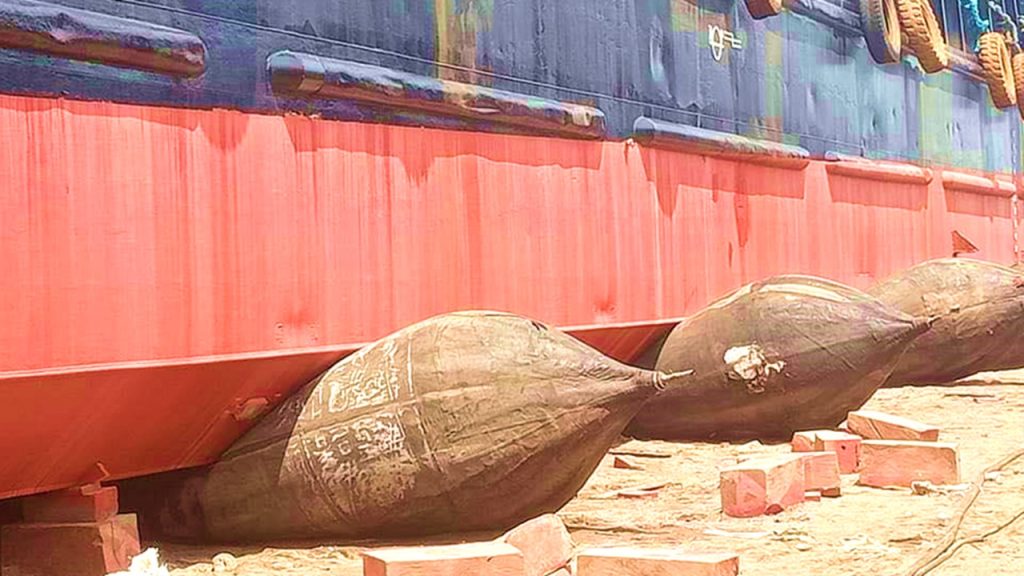LCT, also known as Landing Craft Transport and Landing Craft Tanks, have long been the unsung heroes of Philippine maritime operations, efficiently transporting tanks and other heavy equipment to shore during wartime. However, as times change and military needs evolve, these workhorses of the sea are finding themselves with a new lease on life through ship conversion. The process of converting LCTs into multipurpose vessels has become a hot topic in maritime circles, offering endless possibilities for repurposing these robust crafts. In this comprehensive guide, we delve deep into the world of LCT ship conversion, exploring its history, benefits, challenges, and potential applications across various industries. Whether you’re a naval enthusiast or an entrepreneur seeking innovative solutions for your business ventures at sea, this ultimate guide will equip you with all the knowledge needed to navigate the exciting world of LCT ship conversion.
Click here to view our ship conversion and modification services in the Philippines.
What is Landing Craft Transport (LCT) and its Purpose in the Philippine Maritime Industry?
Landing Craft Transports (LCTs) play a crucial role in the Philippine maritime industry. These versatile vessels are specifically designed for swift and efficient beach landings, making them ideal for transporting cargo, equipment, and personnel to remote areas. With their shallow drafts and ramp doors at the bow or stern, LCTs can access beaches that are inaccessible to traditional ships. This makes them an essential asset in delivering supplies to islands and coastal communities that would otherwise face logistical challenges.
But LCTs aren’t just limited to cargo transport; they also provide valuable support during disaster response operations. In times of calamities like typhoons or earthquakes, when roads and infrastructure may become impassable or severely damaged, LCTs can serve as floating platforms to mobilize aid quickly. Their large deck spaces allow for mounting temporary clinics, command centers, and even helicopter landing pads – ensuring comprehensive emergency services reach affected areas swiftly.
Overall, Landing Craft Transports are integral to the Philippine maritime industry due to their ability to revolutionize logistics by navigating challenging waters with ease and providing aid promptly during times of crisis. The reliable presence of these vessels allows for enhanced connectivity between communities while reinforcing the nation’s disaster response capabilities.

History: Evolution of LCTs and their Use in the Philippine Maritime Industry
The use of LCTs (landing craft tanks or landing craft transports) in the Philippine maritime industry has a rich and fascinating history that spans several decades. Originally designed for military operations during World War II, these versatile vessels were primarily used to transport tanks, troops, and other heavy equipment to shore. However, as time went on, their role in the industry evolved to accommodate the changing needs of commerce and trade.
One interesting aspect of LCTs is their adaptability for conversion into different types of ships. In recent years, there has been a growing trend in the Philippines of repurposing LCTs for various maritime industries such as cargo shipping, offshore construction support, and even tourism. This highlights how these vessels have proven themselves to be highly practical and cost-effective options for businesses looking to expand their operations at sea.
Furthermore, the evolution of LCTs in terms of design and technology has greatly improved their efficiency and performance. Modern LCTs now feature advanced propulsion systems, greater carrying capacity, improved stability control mechanisms, and enhanced maneuverability. These developments have not only increased operational safety but have also made LCT conversions more attractive options for investors looking to tap into the vast potential of the Philippine maritime industry.
Understanding the history and evolution of LCTs gives us valuable insights into how these versatile vessels have shaped the Philippine maritime industry over time. From military use to commercial adaptations and technological advancements, LCT conversions continue to play a significant role in driving growth and innovation within this dynamic sector.
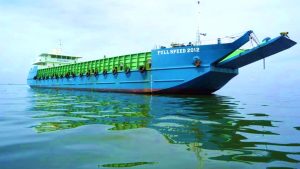
Benefits of LCT Ship Conversion in the Philippines
One of the key benefits of LCT ship conversion in the Philippines is its potential to boost the local economy. The process of converting retired ships into LCTs (or Landing Craft Transports) creates new job opportunities and stimulates various industries. From skilled laborers who work on the actual conversion process to suppliers and service providers, this endeavor generates income for numerous individuals and businesses.
Furthermore, LCT ship conversion also contributes to sustainable development. By repurposing old ships instead of building new ones from scratch, we are reducing waste and making efficient use of existing resources. This not only helps minimize environmental damage but also saves a significant amount of energy that would be required during traditional shipbuilding processes. In a world where sustainability is becoming increasingly important, opting for LCT ship conversions can make a positive impact on our planet.
Embracing LCT ship conversion in the Philippines presents multiple rewards: economic growth, job creation, resource efficiency, and environmental sustainability. It presents an opportunity for local industries to thrive while simultaneously reducing our carbon footprint. As more and more countries see the value in ship conversions, this trend could open doors for greater international trade partnerships as well.

Planning the LCT Ship Conversion Process Effectively
Planning the LCT ship conversion process effectively is crucial for a successful and smooth transition for Filipino vessel owners. One of the first steps in this process is conducting a thorough assessment of the ship, including its existing structure, systems, and functionalities. This assessment will help identify potential challenges and determine the specific requirements for the conversion.
Once the initial assessment is complete, it is essential to create a detailed plan that outlines all the necessary tasks and milestones for the conversion process. This plan should include specific timelines, budgets, and resource allocations to ensure efficient project management. Additionally, it is crucial to involve all key stakeholders, including naval architects, engineers, interior designers, and regulatory agencies, from the early stages of planning to ensure that everyone’s expertise can be utilized effectively throughout the process.
Another factor that should be considered during planning is compliance with safety regulations and industry standards. It is important to work closely with regulatory bodies to understand their requirements and incorporate them into the design and construction phases accordingly. Failure to comply with these regulations not only poses risks but can also result in delays or additional costs in rectifying non-compliance issues later on.

LCT Ship Conversion: Step-by-Step Process in the Philippines
One of the most crucial steps in LCT ship conversion in the Philippines is the initial assessment of the vessel. This involves a comprehensive inspection by Filipino engineers to determine its structural integrity, stability, and overall condition. The purpose is to identify any necessary repairs or modifications that need to be made before proceeding with the conversion process. It is important to have a thorough understanding of the vessel’s existing structure and systems in order to plan for any required changes or upgrades.
Once the assessment phase is complete, the next step is designing and planning for specific modifications. This includes creating detailed schematics and layouts for areas such as engine rooms, living quarters, and cargo spaces. It also involves determining which materials will be used and ensuring compliance with relevant safety regulations and standards.
The actual conversion process begins with stripping down the vessel to its bare bones – removing unnecessary fixtures, fittings, and equipment. Following this, repairs and reinforcements are made as per the earlier assessment report. Structural changes may be required to accommodate new features or increase stability. Finally, new installations, such as engines, plumbing systems, electrical wiring, furnishing, etc., are carried out, followed by rigorous testing procedures.
That’s it! By following these essential steps – assessment of existing vessel conditions; detailed design planning; strip down & repair; installation & integration – successful LCT ship conversions can be achieved in no time!

Types of LCT Ship Conversion: Different Purposes for Conversions
LCT (Landing Craft Tank) ships are versatile vessels that have been used for various purposes throughout the Philippine maritime industry. Today, they can be converted to serve different purposes depending on the needs of the Filipino owner or operator. One popular type of LCT ship conversion is for transportation and logistics. These conversions involve retrofitting the ship with larger cargo holds and improved loading equipment to enhance its capacity and efficiency in moving goods.
Another type of LCT ship conversion in Cavite, Manila, Cebu, and Subic Bay is for offshore operations. In this case, the vessel is modified to support oil and gas exploration activities in the Philippines, such as setting up drilling rigs or providing support services to offshore platforms. This requires equipping the LCT ship with specialized equipment, like cranes and winches, as well as strengthening its structure to withstand harsh ocean conditions.
One unique type of LCT ship conversion that has gained popularity recently is transforming it into a floating accommodation facility in Luzon, Visayas, and Mindanao. These converted ships are used as floating hotels or dormitories for workers in remote locations, such as construction sites or off-shore wind farms. The interior of these LCT ships is redesigned to accommodate sleeping quarters, dining areas, recreational facilities, and other amenities needed for long-term stays.
The versatility of LCT ships allows them to be transformed into various useful assets across different industries. Whether it’s for transportation and logistics, offshore operations, or floating accommodations – these conversions provide cost-effective solutions that meet specific requirements while maximizing the use of existing resources.
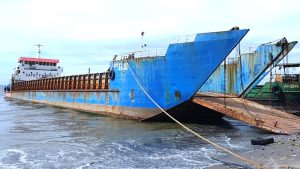
Key Considerations Before Starting the LCT Ship Conversion Process
Here are the things you should consider before starting LCT ship conversion:
1. Safety & Compliance for LCT Ship Conversion:
Ensuring the safety and compliance of your LCT ship conversion should be at the top of your list of considerations. It is crucial to conduct a thorough assessment of the vessel’s structural integrity, stability, and safety systems before starting any conversion process. This includes checking for any damage or wear and tear that might need repair, as well as ensuring that all necessary safety equipment and features are in place.
2. Functional Design & Purpose for LCT Ship Conversion:
Another key consideration when starting the LCT ship conversion process is determining its functional design and purpose. Think about how you envision using the converted ship – will it be for transporting cargo, hosting events or parties, or accommodating passengers? Understanding its intended function will help guide decisions on layout, amenities, and equipment needed during the conversion process. It is essential to plan ahead so that everything aligns with your goals and expectations for the vessel.
3. Cost Analysis & Budgeting for LCT Ship Conversion:
LCT ship conversion in the Philippines involves a significant financial investment, so conducting a comprehensive cost analysis is vital before embarking on any conversion project. Assessing costs associated with labor, materials, Philippine permits/licenses, equipment installation, maintenance requirements, insurance coverage (if applicable), and other potential expenses ensures you have a realistic budget in place from start to finish. Taking these key factors into account will help avoid unexpected financial burdens later on in the process.
4. Design and Layout Planning for LCT Ship Conversion:
Once you have established a budget, it is important to carefully plan the design and layout of the LCT ship conversion project in the Philippines. Consider how you want to utilize the space on board and what specific features or functionalities are necessary for your intended use. This could include determining the number and size of cabins or rooms, designing a galley or kitchen area, creating storage spaces, allocating areas for recreational activities or workstations, and ensuring proper ventilation and safety measures.
5. Choosing the Right Materials and Equipment for LCT Ship Conversion:
After finalizing the design and layout, it is crucial to select the right materials and equipment for your LCT ship conversion project in the Philippines. This involves considering factors such as durability, functionality, cost-effectiveness, and compliance with safety regulations. For example, you may need to choose suitable flooring materials that are resistant to water damage or opt for fire-resistant insulation for added safety. Additionally, selecting energy-efficient appliances and systems can help reduce long-term operational costs.
6. Implementing Sustainable Practices for LCT Ship Conversion:
As the world becomes more conscious of environmental sustainability, it is important to incorporate eco-friendly practices into your LCT ship conversion project in the Philippines. This can include installing solar panels to harness renewable energy, using energy-efficient lighting systems, and implementing waste management strategies such as recycling and composting. By prioritizing sustainability in your design choices, you not only reduce your carbon footprint but also appeal to environmentally-conscious customers.
7. Investing in Staff Training for LCT Ship Conversion:
To ensure the smooth operation of LCT ship conversion, it is crucial to invest in staff training of Filipino workers and engineers. Equip your Filipino crew members with the necessary skills and knowledge required for efficient maintenance and operation of the vessel. This can include training on handling new technologies, implementing sustainable practices, emergency procedures, and customer service. By investing in staff training, you not only enhance productivity but also improve customer satisfaction levels.
8. Implementing Sustainable Waste Management Practices for LCT Ship Conversion:
As part of your commitment to environmental sustainability, it is important to implement sustainable waste management practices on your LCT ship conversion project in the Philippines. This can include recycling programs, composting facilities, and proper disposal methods for hazardous materials. By reducing waste and promoting responsible waste management, you not only contribute to a cleaner environment but also set an example for other businesses in the industry. Additionally, implementing these practices can potentially lead to cost savings by reducing waste disposal fees and optimizing resource usage.

Challenges and Considerations: Factors to Keep in Mind During LCT Ship Conversion
One of the major challenges to keep in mind during LCT ship conversion is ensuring compliance with Philippine safety regulations and standards. The process of converting a ship requires extensive modifications, such as adding new equipment, altering the structural integrity, and enhancing the vessel’s stability. It is imperative to work closely with naval architects and marine engineering experts to make sure that all changes are done in alignment with relevant guidelines. This includes considering factors like load capacity, weight distribution, and stability analysis to ensure safe operation.
Another consideration during LCT ship conversion is the potential impact on the vessel’s operating efficiency. Although converting an LCT ship offers opportunities for improving its versatility and functionality, it is essential to strike a balance between these enhancements and operational pragmatism. For instance, while adding additional decks or compartments may increase cargo capacity or passenger accommodation, it can also potentially affect weight distribution and fuel consumption. Careful planning must be undertaken to optimize both operational efficiency and conversion goals without compromising on cost-effectiveness.
Moreover, environmental considerations cannot be ignored during LCT ship conversion. As environmental regulations become more stringent worldwide, there is a growing need for sustainable practices in shipping operations. Conversion projects should aim at incorporating eco-friendly solutions such as energy-efficient systems or alternative fuels whenever possible. Moreover, any alterations made during the conversion process should adhere to maritime pollution prevention protocols in order to mitigate potential adverse effects on marine ecosystems.

Success Stories: Examples of successful LCT conversions
One notable success story of an LCT conversion in the Philippines is the transformation of a retired LCT into a luxurious floating resort. This innovative project involved converting the vessel’s cargo hold into several spacious and elegantly designed guest rooms, complete with modern amenities. The open deck area was turned into a stunning outdoor lounge and dining space, offering guests breathtaking views of the surrounding seascape. With its unique and unconventional concept, this converted LCT has attracted travelers seeking a one-of-a-kind experience and has become a thriving business venture.
Another inspiring success story is the conversion of an LCT into a floating medical facility to provide healthcare services to remote island communities in the Philippines. By repurposing the cargo hold as clinic rooms equipped with essential medical equipment, this converted vessel brings much-needed healthcare access to underserved areas that are difficult to reach by land. The mobile nature of the LCT allows it to navigate the Philippines’ coastal regions, ensuring that quality medical care is accessible even in isolated locations. This transformation proves how creativity and ingenuity can be leveraged to address social issues and improve lives through ship conversions.
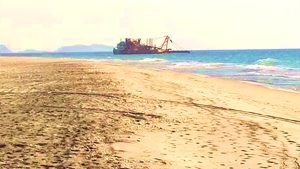
Essential Equipment and Systems for Converted Ships
When it comes to LCT ship conversion projects in the Philippines, there are several essential equipment and systems that need to be considered. One of the most important is the propulsion system. Whether it’s a diesel engine or an electric motor, the ship’s propulsion system should be efficient and reliable. Additionally, a well-designed ballast system is crucial for maintaining stability and balance during navigation.
Another important piece of equipment in ship conversion is the electrical system. This includes generators, distribution panels, wiring, and lighting fixtures. The electrical system not only powers all onboard equipment but also ensures safety by providing electricity to emergency systems such as fire alarms and navigation lights.
In terms of safety equipment, converting ships should be equipped with firefighting systems, including extinguishers, fire pumps, hydrants, and sprinklers. Additionally, life-saving appliances such as lifeboats or liferafts must be installed in case of emergencies. A properly functioning communication system is also vital on converted ships for effective coordination between crew members and emergency response teams.
It’s crucial to prioritize these essential equipment and systems during ship conversion to ensure a safe and functional vessel ready for its new purposes in various industries such as transportation, tourism, or offshore operations.
Looking for an LCT Ship Conversion Company in the Philippines?
When it comes to LCT ship conversion in the Philippines, Amaya Dockyard & Marine Services Inc. (ADMSI) is a name that stands out for its commitment to providing cost-effective and quality solutions. With years of experience in shipbuilding and repair, ADMSI has established itself as a leading player in the maritime industry.
- Email us: info@amayadockyard.com
- Call our 24-hour hotline: +63 917 633 0479
- Viber: +63 917 633 0479
- WhatsApp: +63 917 633 0479
- Facebook Messenger: Click here
- Click here to inquire
What sets ADMSI apart from other companies is our wide range of services tailored specifically for LCT ship conversion. We offer comprehensive packages that cover everything from design and engineering to construction and installation. This holistic approach ensures that every aspect of the project is carefully planned and executed, resulting in a seamless transformation of Filipino-owned vessels.
In addition to our expertise, ADMSI prides itself on its commitment to customer satisfaction. We understand that every client has unique needs and requirements, which is why we prioritize open communication throughout the entire process. Our Filipino team of experienced professionals and engineers will work closely with you to ensure that all your specifications are met while adhering to strict quality standards.
With ADMSI by your side, you can trust that your LCT ship conversion project will be completed efficiently and within budget. Our track record speaks for itself, with numerous successful projects under our belt. So if you’re looking for a reliable LCT ship conversion company in Cavite and Metro Manila that can deliver cost-effective solutions without compromising on quality, look no further than Amaya Dockyard & Marine Services Inc.
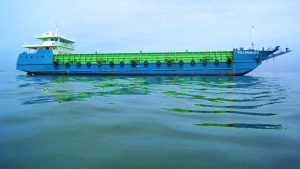
Summing Up: LCT Ship Conversion in the Philippines
In conclusion, LCT ship conversion in the Philippines offers a multitude of opportunities for Filipino investors and entrepreneurs. The booming industrial and tourism industries, coupled with the country’s strategic location and abundant natural resources, make it an ideal destination for LCT ship conversion projects. With its vast coastline and numerous islands, there is a high demand for efficient transportation and logistics solutions.
Furthermore, the cost-effectiveness of converting LCT ships compared to building new ones is a major advantage. It allows companies to save both time and money while still providing quality services. Additionally, repurposing existing ships promotes sustainability and reduces waste in the Philippine maritime industry.
Overall, LCT ship conversion has proven to be a game-changer in the Philippines’ maritime sector. By harnessing the potential of these converted vessels, businesses can tap into new markets and contribute to the country’s economic growth. The future looks bright for LCT ship conversions as they continue to revolutionize transportation and logistics in this archipelagic nation.
Transforming ships into something extraordinary? Our ultimate guide on LCT ship conversion in the Philippines has got you covered! Unleash your creativity now with ADMSI.

